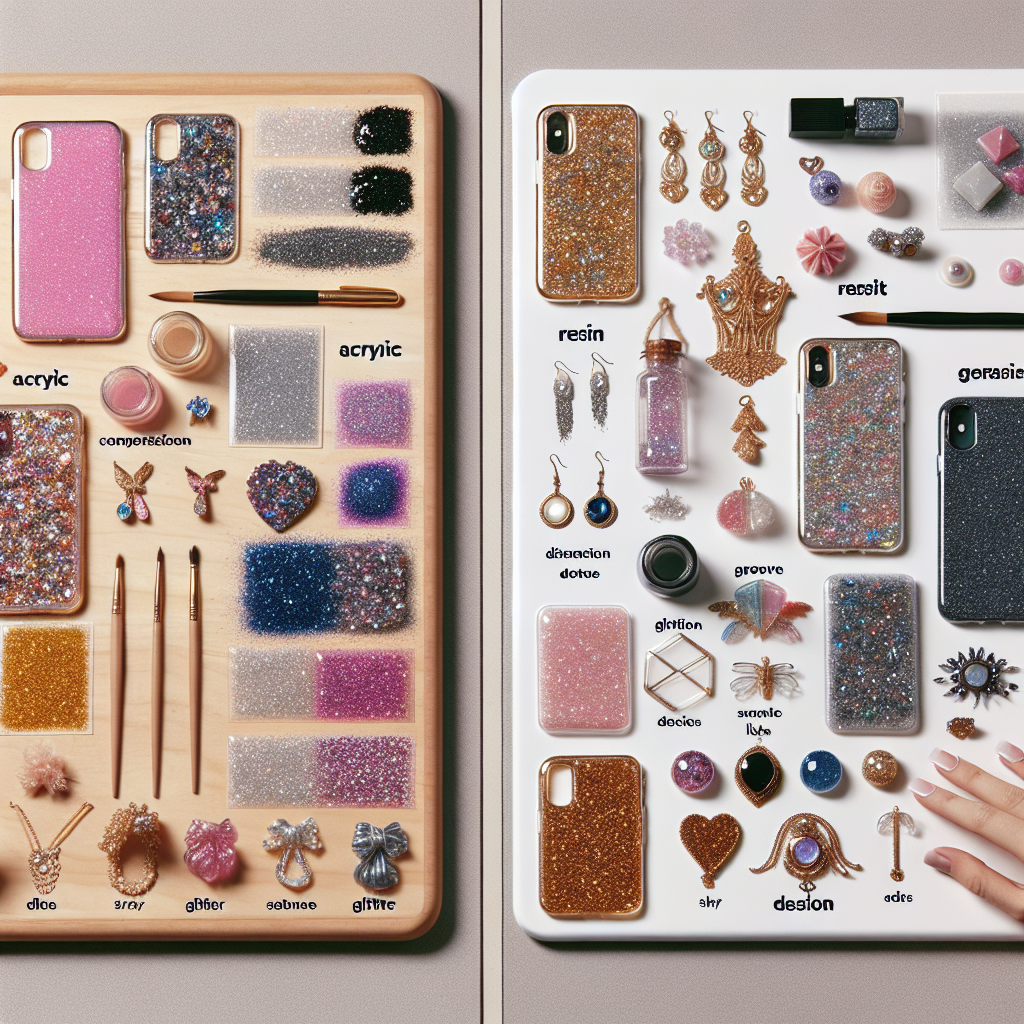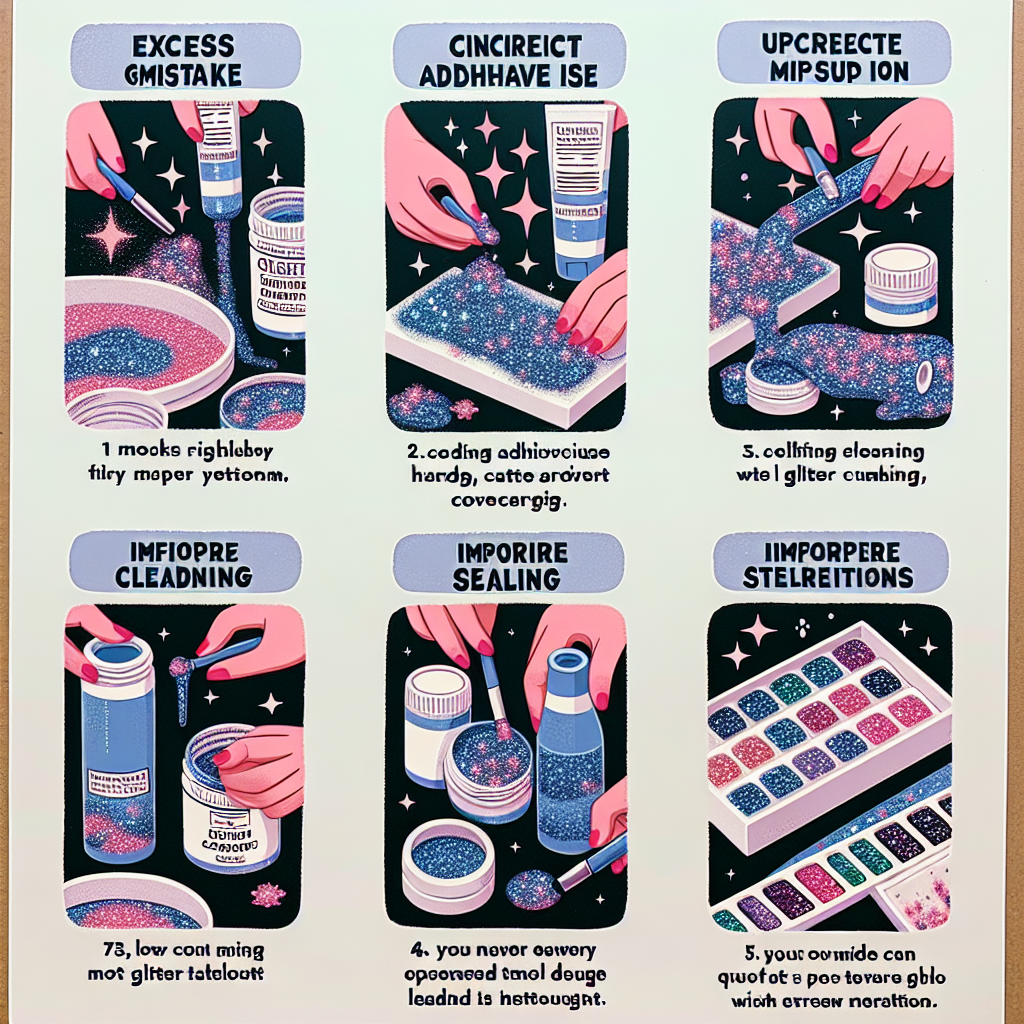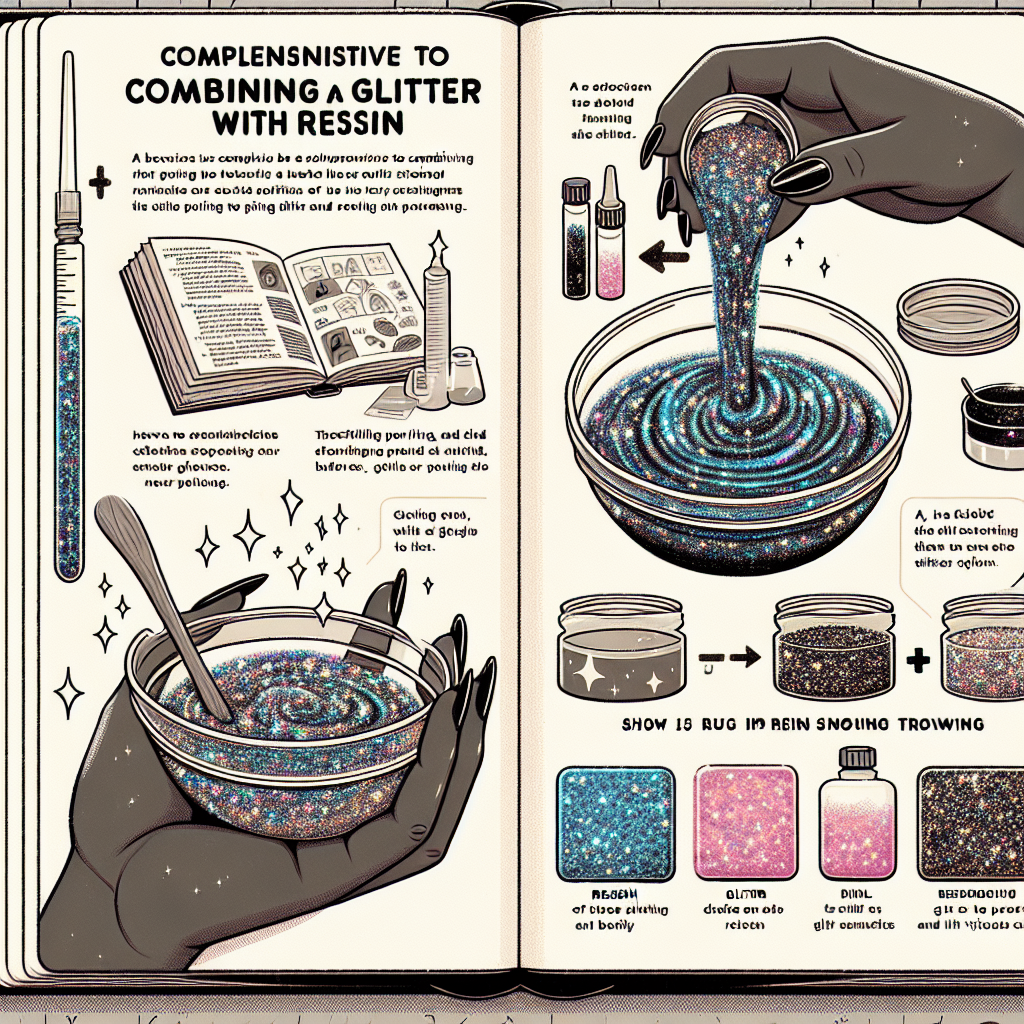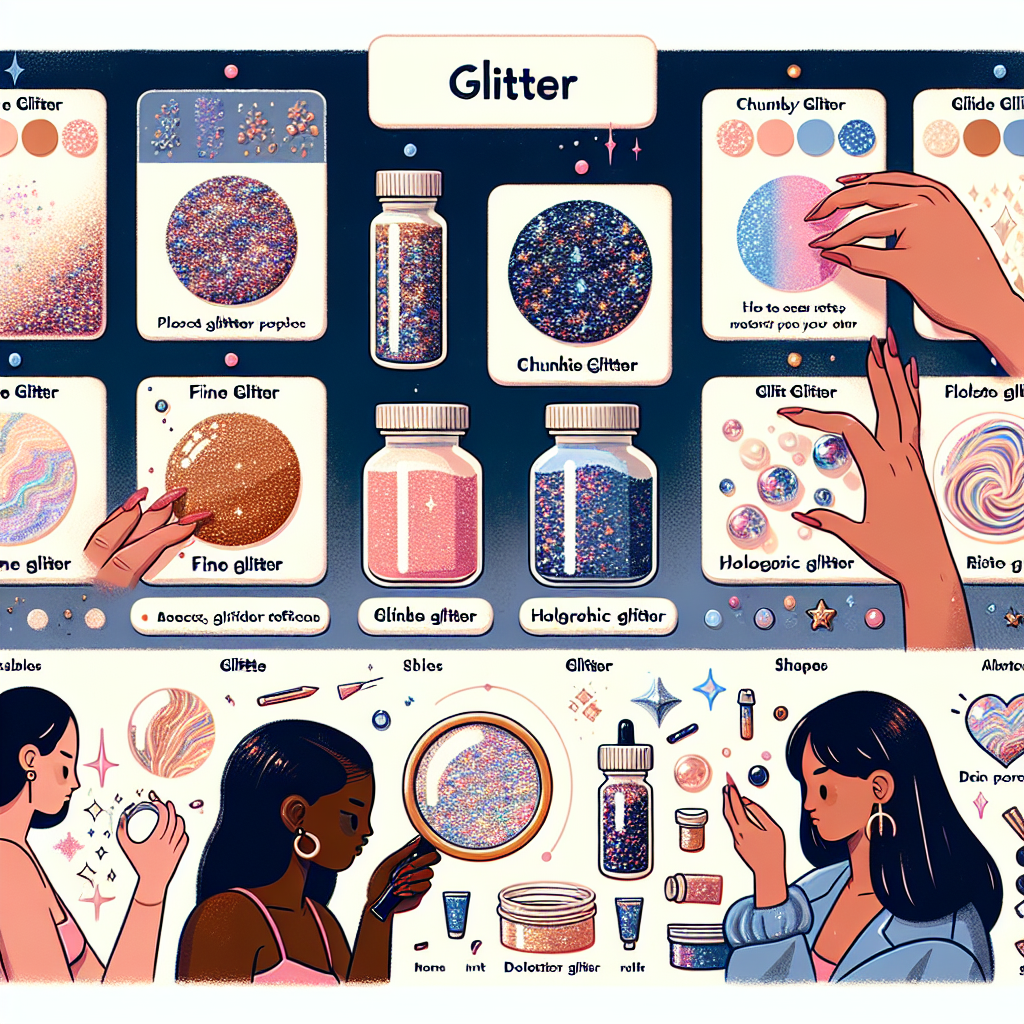-
Table of Contents
“Resin vs. Acrylic: Unleash Your Sparkle – Find the Perfect Medium for Glitter Masterpieces!”
When it comes to crafting with glitter, choosing the right medium can significantly impact the final outcome of your project. Resin and acrylic are two popular options, each offering unique properties and benefits. Resin is known for its high-gloss finish, durability, and ability to encapsulate glitter beautifully, creating a stunning, three-dimensional effect. On the other hand, acrylic is often favored for its ease of use, quick drying time, and versatility in various applications. This introduction explores the key differences between resin and acrylic, helping crafters determine which material is best suited for their glitter projects.
Resin Properties: Advantages and Disadvantages for Glitter Projects
When considering materials for glitter projects, resin emerges as a popular choice due to its unique properties and versatility. One of the primary advantages of resin is its ability to create a high-gloss finish that enhances the vibrancy of glitter. This glossy surface not only elevates the aesthetic appeal of the project but also provides a protective layer that can safeguard the glitter from wear and tear. Additionally, resin is known for its durability; once cured, it forms a solid, long-lasting structure that can withstand various environmental conditions. This resilience makes it particularly suitable for items that may be exposed to moisture or sunlight, such as jewelry or decorative pieces.
However, while the advantages of resin are compelling, it is essential to consider its disadvantages as well. One significant drawback is the complexity of the mixing and curing process. Resin typically requires precise measurements and thorough mixing to achieve the desired results. This can be daunting for beginners, as improper ratios can lead to issues such as incomplete curing or a cloudy finish. Furthermore, the curing time for resin can be lengthy, often taking several hours to days, which may not be ideal for those seeking quick results.
Another consideration is the potential health risks associated with resin. Many types of resin contain volatile organic compounds (VOCs) that can be harmful if inhaled. Therefore, it is crucial to work in a well-ventilated area and to use appropriate personal protective equipment, such as gloves and masks. This necessity for safety precautions can deter some crafters from choosing resin for their glitter projects, especially those who are new to crafting or who may not have access to a suitable workspace.
In addition to health concerns, the cost of resin can also be a factor. While there are budget-friendly options available, high-quality resin can be relatively expensive compared to other materials. This cost may be prohibitive for those looking to undertake larger projects or for hobbyists who are experimenting with different techniques. Despite these challenges, many crafters find that the benefits of using resin outweigh the drawbacks, particularly when it comes to achieving a professional finish.
Moreover, the versatility of resin allows for a wide range of creative possibilities. It can be tinted with colors, embedded with various materials, and combined with different types of glitter to create unique effects. This adaptability makes resin an appealing option for artists looking to push the boundaries of their glitter projects. Additionally, the ability to create custom molds with resin opens up further avenues for creativity, enabling crafters to design one-of-a-kind pieces that reflect their personal style.
In conclusion, while resin presents several advantages for glitter projects, including its glossy finish, durability, and versatility, it is essential to weigh these benefits against its disadvantages, such as the complexity of use, health risks, and cost. Ultimately, the decision to use resin will depend on the individual crafter’s experience level, project requirements, and personal preferences. By carefully considering these factors, crafters can make informed choices that will enhance their glitter projects and lead to satisfying results.
Acrylic Benefits: Why Choose Acrylic for Your Glitter Creations
When it comes to selecting the ideal medium for glitter projects, acrylic emerges as a compelling choice for a variety of reasons. One of the primary benefits of acrylic is its versatility. This material can be easily manipulated and shaped, allowing artists and crafters to create intricate designs that showcase glitter in unique ways. Whether one is pouring, casting, or painting, acrylic provides a smooth surface that enhances the vibrancy of glitter, ensuring that the final product is visually striking.
Moreover, acrylic is known for its quick drying time, which is particularly advantageous for those who wish to complete projects efficiently. Unlike resin, which can take hours or even days to cure fully, acrylic dries relatively quickly, allowing for faster layering and the ability to add additional elements without long waiting periods. This feature is especially beneficial for crafters who may be working on multiple projects simultaneously or those who prefer to see immediate results from their efforts.
In addition to its quick drying properties, acrylic is also user-friendly. It is readily available in various forms, including paints, gels, and mediums, making it accessible for both beginners and experienced artists alike. The ease of use associated with acrylic means that even those who are new to crafting can achieve professional-looking results without extensive training or experience. Furthermore, acrylic products often come in a wide range of colors and finishes, providing endless possibilities for customization. This variety allows crafters to experiment with different combinations of glitter and acrylic hues, resulting in personalized creations that reflect individual styles.
Another significant advantage of acrylic is its durability. Once dry, acrylic forms a robust and resilient surface that can withstand wear and tear, making it suitable for items that will be handled frequently or exposed to various environmental conditions. This durability ensures that glitter projects maintain their beauty over time, resisting fading and chipping that can occur with other materials. Consequently, items made with acrylic can be used for both decorative and functional purposes, further enhancing their appeal.
Additionally, acrylic is generally more affordable than resin, making it a cost-effective option for those who may be working within a budget. This affordability does not compromise quality; rather, it allows crafters to experiment more freely without the fear of wasting expensive materials. As a result, individuals can explore their creativity and try out new techniques without the financial burden that often accompanies more costly mediums.
Furthermore, the cleanup process associated with acrylic is simpler compared to resin. Acrylic paints and mediums can typically be cleaned up with soap and water while they are still wet, which is a significant advantage for those who prefer a hassle-free crafting experience. This ease of cleanup encourages experimentation and creativity, as crafters can focus on their artistic vision rather than worrying about the mess.
In conclusion, acrylic offers numerous benefits that make it an excellent choice for glitter projects. Its versatility, quick drying time, user-friendliness, durability, affordability, and ease of cleanup all contribute to its appeal among crafters. By choosing acrylic, artists can create stunning glitter-infused pieces that not only showcase their creativity but also stand the test of time, making it a preferred medium for many glitter enthusiasts.
Comparing Durability: Resin vs. Acrylic in Glitter Applications
When it comes to selecting the ideal medium for glitter projects, the choice between resin and acrylic often arises, particularly when durability is a primary concern. Both materials have their unique properties, but understanding their differences in terms of durability can significantly influence the outcome of a project.
Resin, a synthetic polymer, is renowned for its exceptional strength and resilience. When cured properly, resin forms a hard, glass-like surface that is not only visually appealing but also highly resistant to scratches and impacts. This characteristic makes resin an excellent choice for projects that require longevity, such as jewelry, coasters, and decorative items that may be subjected to wear and tear. Furthermore, resin is impervious to moisture, which adds another layer of durability, especially for items that may be exposed to humidity or spills. The ability of resin to encapsulate glitter creates a stunning visual effect, as the glitter is suspended within the clear medium, allowing for a three-dimensional appearance that enhances the overall aesthetic.
On the other hand, acrylic, while also a durable material, presents a different set of advantages and limitations. Acrylic is a type of plastic that is lightweight and shatter-resistant, making it a popular choice for various crafting applications. However, when it comes to glitter projects, acrylic may not offer the same level of protection as resin. Although acrylic can withstand some degree of impact, it is more prone to scratching and may not hold up as well under heavy use. Additionally, acrylic surfaces can be affected by exposure to certain chemicals, which may lead to discoloration or degradation over time.
Moreover, the application process for both materials can influence their durability in glitter projects. Resin requires careful mixing and curing, which can take several hours to days, depending on the specific product used. This curing process is crucial, as it determines the final hardness and clarity of the finished piece. In contrast, acrylic can be easier to work with, as it often dries quickly and can be manipulated more readily. However, this quick-drying nature may lead to challenges in achieving a smooth finish, particularly when incorporating glitter. If not applied correctly, the glitter may settle unevenly or become clumped, detracting from the overall appearance and durability of the project.
In terms of maintenance, resin projects typically require minimal upkeep, as the hard surface is easy to clean and resistant to staining. Conversely, acrylic items may need more frequent care to maintain their clarity and prevent scratches. This difference in maintenance can be a deciding factor for those who prioritize longevity and ease of care in their glitter projects.
Ultimately, the choice between resin and acrylic for glitter applications hinges on the specific requirements of the project. If durability and a high-quality finish are paramount, resin may be the superior option, providing a robust and visually striking result. However, for those seeking a lightweight and more accessible medium, acrylic can still yield beautiful outcomes, albeit with some limitations in durability. By carefully considering the intended use and desired aesthetic, crafters can make an informed decision that best suits their glitter project needs.
Q&A
1. **Question:** Which material provides better clarity for glitter projects, resin or acrylic?
**Answer:** Resin typically provides better clarity than acrylic, allowing glitter to shine more brightly and appear more vibrant.
2. **Question:** Which material is more durable for outdoor glitter projects?
**Answer:** Acrylic is generally more durable for outdoor use, as it is more resistant to UV light and weathering compared to resin.
3. **Question:** Which material is easier to work with for beginners in glitter projects?
**Answer:** Acrylic is often easier to work with for beginners, as it requires less precise mixing and curing compared to resin.In conclusion, the choice between resin and acrylic for glitter projects largely depends on the desired outcome and application. Resin offers a high-gloss finish, excellent durability, and the ability to create a three-dimensional effect, making it ideal for intricate designs and long-lasting pieces. However, it requires careful handling and curing time. Acrylic, on the other hand, is easier to work with, dries quickly, and is more forgiving for beginners, but may not provide the same depth and shine as resin. Ultimately, the best option will depend on the specific needs of the project and the skill level of the crafter.





